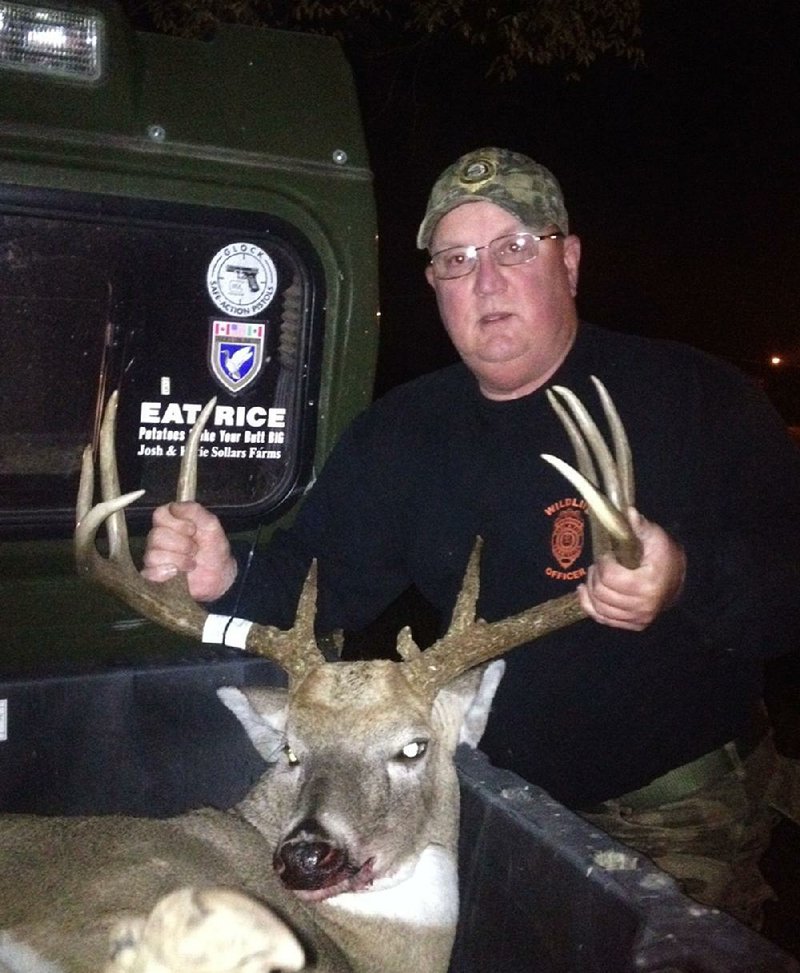Of the things that stir my soul, few compare with the sight of flying mallards aglow in the soft light of an autumn sunrise.
The green heads of the drakes shimmer. Their chestnut breast plates accent breast and belly feathers that look almost silver, and their wing patches flicker like blue strobes.
Specklebelly geese have a prominent place in this montage. Their mottled buff undersides glow almost pink in the morning light, and their distinctive mottling patterns give each bird a unique signature.
Snow geese, too, blinding white with their black wingtips.
For the southern duck hunter, it is the daytime equivalent of the aurora borealis. See it once, and it's forever a part of you.
I was thankful last week to see the waterfowl aurora in all its glory. The place is not important because it appears wherever you find waterfowl in the Natural State. I was especially thankful to share it with good friends.
The trip started with a deer hunt. My host directed me to a stand on a wooded point at the edge of a vast field that was planted with what appeared to be winter wheat, oats and maybe rye or alfalfa. A feeder was in a sheltered finger between woodlots.
Distances are deceptive in this kind of environment, so I shot landmarks with my Leupold RX-750 rangefinder. The feeder was 106 yards away. An opening between wood lots was 270 yards. A box stand directly across the field was 415 yards. Another wooded point to my right was 185 yards. A big tuft of grass in the middle of the field was 330 yards.
I imagined an arc connecting those points, with the tuft of grass as its apogee. A deer within its boundaries would be fair game for my 6.5x55 Ruger. The expanse between the tuft and the distant stand was an observation zone only.
Deer appeared in the field well beyond the distant stand. I estimated them to be about 550 yards, and they didn't come closer. Two more appeared at the edge of the treeline and the distant stand, but both were does. My host encouraged me to take a doe on a Deer Management Assistance Program tag if I wished, so I watched them through my binoculars. They meandered my direction, but I ran out of daylight.
The next morning found me and my host in a blind with three other hunters and a Labrador retriever named Wyatt. As always, a good number of ducks fluttered into the hole before legal shooting time and they left before legal shooting time.
I started the morning with a two-shot kill on a fat mallard drake, but his kind were few. This place always has a lot of gadwalls, though, and that morning was no exception. They were welcome, as always, with their stately tweed attire. They're smaller than mallards, but much larger than teal, and they are so tasty!
Unfortunately, we had picked the wrong blind for the morning's southwest wind. Ducks worked the hole, but the wind spoiled their approach. After several passes they gave up and winged to a more hospitable spot.
We had to make difficult passing shots on drop-in ducks, and there were enough of those to keep us busy. We finally went to another blind that was more amenable to the wind, and we splashed three greenheads that sailed in head-on. We finished the morning with a respectable mixed bag of gadwalls and mallards, and one wood duck.
That afternoon, my host and I did another deer hunt. My spot was a stand deep in a 100-acre tract of hardwoods.
"Do not shoot a doe in here," he said. "This is a place where the 'swamp donkeys' live," meaning bucks in the 130-inch range and better.
The woods were tight and thick, but I identified four routes that deer were likely to take. I was right on the first one. At about 3:30 p.m., I saw a brown tail flick at a bend in a trail. It was a doe that made a slow circle to the north, rubbing on various limbs. I expected a buck to follow, but none did.
An hour later, I heard a commotion in the leaves to the south. Armadillos and squirrels had thrashed around for hours, but this sounded different. It was deeper.
Three bucks walked past. One was a tall 4-point. Another was a small 4-point, and the third was a spike with one antler that lay almost flat on its head. Among them was a skittish doe, and trailing them was a mature doe.
They fed around me for quite a long time, but a mature buck never appeared.
Another doe came in from the north and followed the scent trail of the first doe. This was curious because those two deer seemed to have no relation to the other herd. They had different routes and seemingly different destinations and agendas, for lack of a better word.
As with the previous day, night fell without a shot.
The next morning found my host and I in the same duck blind as before. The wind was more agreeable, but the ducks were not cooperative. There weren't all that many ducks to begin with, and they were pretty wary after being run through a "steel mill" for nearly a week.
Again, we got a small mixed bag of gadwalls and mallards, but more important was the splendid time in fellowship with old and new friends under the sublime glow of the southern aurora.
Sports on 11/29/2015

